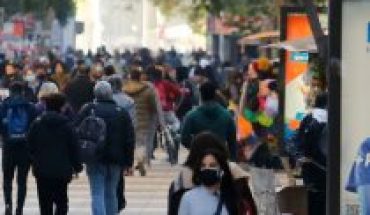It is estimated that around 30% of the world’s population is currently under various blocking measures, with some countries stricter than others due to the coronavirus pandemic. And while for the vast majority of us these are strange and unprecedented times, for past generations, who did not have modern medicine, such periods of isolation were an occasional, if annoying, part of life. This was the case of Isaac Newton, who during the Great Plague of London that swept through the British city from 1665 was studying at Trinity College, Cambridge and, like many others, retreated to the countryside to escape the disease-ridred city and spent two long periods at his family’s home in rural Lincolnshire.
Woolsthorpe Manor is the home (and current museum) of Lincolnshire known as the family home and birthplace of Isaac Newton.
Freed from the limitations of the Cambridge curriculum, and the rigor and hustle and bustle of university life, Newton discovered that he had the right space to reflect and develop his theories on optics, calculation and the laws of movement and gravity. First, he continued his work in mathematics; by which he sought to determine universal equations involving fluctuating quantities, a subject that had been addressed, on a limited scale, by French mathematicians René Descartes and Pierre de Fermat; and that Newton managed to solve in late 1966.It was during this period, in turn, that Newton performed his famous experiment of the prism: he drilled the window of his room, intercepted the resulting ray of light with a prism and then placed a second prism in the path of those refracted rays; proving for the first time that the prisms did not create colors as thought at the time, but that light was the mixture of all colors and the prism merely broke it down.
Finally, this was the period that gave rise to the famous legend of the apple that falls and hits the physicist and mathematician on the head, thus leading it to the deduction of the Law of Gravity.But no later than that legend may sound, there are actually no records that the apple has not been imaginary (or hypothetical). And, in fact, the first evidence of the apple anecdote is in Newton’s biography written by his friend William Stukeley, where he recounts that by drinking tea in the shade of apple trees, Newton had commented that he was “in the same situation as when the idea of gravitation first came to mind.” And there it details: “[la idea] it caused the fall of an apple, while she sat, reflecting. He thought to himself, why does the apple always have to fall perpendicular to the ground? Why doesn’t it fall up or to one side, and not always toward the center of the Earth? The reason has to be that the Earth attracts it.”
Returning to the development of the Law of Universal Gravitation, Newton thought about the principles of inertia and how an apple in the air, or any object, is prevented from flying off Earth into space. He deduced that the force pushing the apple down must be the same force that pushes the moon toward Earth and that, moreover, the moon must also apply that same force of attraction to Earth, albeit on a smaller scale. Following this line of thought he was then able to describe the gravitational interaction between different bodies with mass, establishing that these forces are proportional to the product of their masses and inversely proportional to the square of the distance between them.
A series of minor discoveries that showed that Newton was so intellectually transformed by his period of isolation that he later became known to his time outside Cambridge as his annus mirabilis, or his “year of wonders”.





